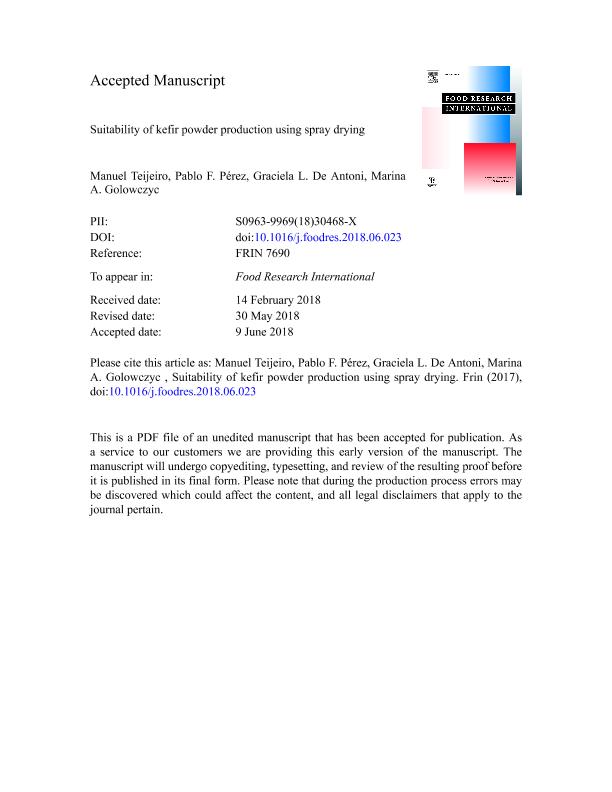Artículo
Suitability of kefir powder production using spray drying
Fecha de publicación:
10/2018
Editorial:
Elsevier Science
Revista:
Food Research International
ISSN:
0963-9969
Idioma:
Inglés
Tipo de recurso:
Artículo publicado
Clasificación temática:
Resumen
Spray drying was applied for the production of kefir powder. The survival of microorganisms after drying, storage and simulated gastrointestinal (GI) conditions was investigated. Kefir was obtained by fermentation of milk and whey permeate, and was dehydrated directly (traditional kefir) or using different carriers (skim milk, whey permeate and maltodextrin). Low survival (5.5 log and <2 log CFU/g for lactic acid bacteria and yeast respectively) of microorganisms was achieved when kefir was dehydrated without thermoprotectants (carriers). In contrast, survival of the microorganisms was significantly improved in the presence of different carriers. When skim milk (SM) was used as the carrier medium, lactic acid bacteria (LAB) survival was above 9 log CFU/g. In contrast, viability of yeast was dramatically reduced after spray drying in these conditions. When whey permeate was used as the carrier medium, LAB survival was 8 log CFU/g and yeast survival was above 4 log CFU/g. LAB in the kefir powder survived better the simulated GI conditions when spray drying was conducted in SM. LAB in kefir powder sample dehydrated in SM and SM plus maltodextrin remained stable for at least 60 days at 4 °C. Our results demonstrated that spray drying of kefir is a suitable approach to obtain a concentrated kefir-derived product.
Palabras clave:
KEFIR
,
LACTIC ACID BACTERIA
,
SPRAY DRYING
,
YEAST
Archivos asociados
Licencia
Identificadores
Colecciones
Articulos(CIDCA)
Articulos de CENTRO DE INV EN CRIOTECNOLOGIA DE ALIMENTOS (I)
Articulos de CENTRO DE INV EN CRIOTECNOLOGIA DE ALIMENTOS (I)
Citación
Teijeiro, Manuel; Perez, Pablo Fernando; de Antoni, Graciela Liliana; Golowczyc, Marina Alejandra; Suitability of kefir powder production using spray drying; Elsevier Science; Food Research International; 112; 10-2018; 169-174
Compartir
Altmétricas




